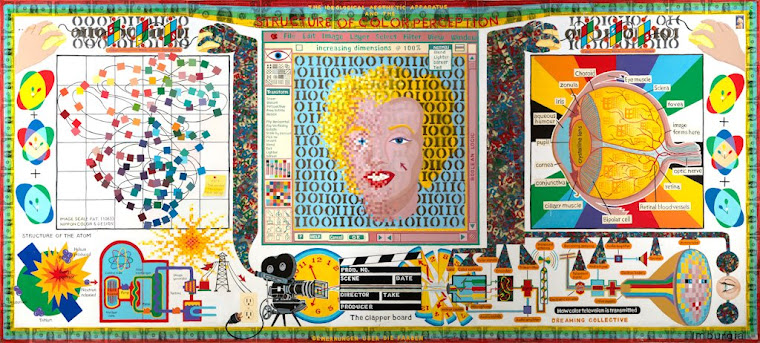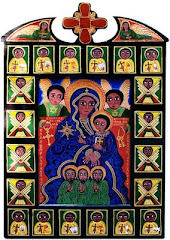 |
| Untitled. By Peter Kline |
Klediments: The Cloud-Reader.
“To make myself understood and to diminish the distance between us, I called out: “I am an evening cloud too.” They stopped still, evidently taking a good look at me. Then they stretched towards me their fine, transparent, rosy fingers. That is how evening clouds greet each other and they had recognized me.” Rainer Maria Rilke, "Stories of God."
My Facebook friend Peter Kline made these 'clouds.'
But who are these clouds? Where did they come from and what are they doing? At first I thought bleeding, other times crying. Sometimes they look like seeping wounds other times like Christmas ornaments or apocalyptic fruit caught in festering conflagrations. But as the poet said, “sixty one years of my life had passed before I understood that clouds were not my enemy; that they were beautiful, and that I needed them. I suppose this, for me, marked the beginning of wisdom.”

I have been studying the science of clouds for months now but Peter's 'clouds' are…off the charts. I have never actually seen clouds like them in any text book, schematic, photograph, or sky, although I may have spotted them in a dream once but they were upside down and black and white; more like dark comets streaking away from our desperate wishes. But over time I am getting to know Peter's clouds and I am trying to let them teach me how to read them. But it will not be for me to say who they are. Even now this rage for order, classification, control, remains too strong in my heart and if not overcome it will eventually blind and kill me--unless what is written is true, that although my wings have been lost and forgotten someday I will surrender all my sorrows in a sky full of grace.

So let me share this inspiring poem by my neighbor David Whyte, an internationally recognized and respected poet and writer. And although I have read his poems for decades and he lives close by, I have never met Mr. Whyte, but I did once have the privilege to make repairs to his house while he was speaking abroad.
THE OPENING OF EYES
That day I saw beneath dark clouds,
the passing light over the water
and I heard the voice of the world speak out,
I knew then, as I had before,
life is no passing memory of what has been
nor the remaining pages in a great book
waiting to be read.
It is the opening of eyes long closed.
It is the vision of far off things
seen for the silence they hold.
It is the heart after years
of secret conversing,
speaking out loud in the clear air.
It is Moses in the desert
fallen to his knees before the lit bush.
It is the man throwing away his shoes
as if to enter heaven
and finding himself astonished,
opened at last,
fallen in love with solid ground.
Perhaps some poetry, like some paintings, needs a drop-cloth to collect the runoff, drips, and spatter. Notice how Peter's clouds rest on a drip catcher, as if there was such surplus of meaning or intention that one canvas couldn't contain or control it. The same happens with writing sometimes, the pigments in the saturated language gets drawn by gravity or flung by force and whatever is not masked-off gets splattered. These splatters though can act like the seeding of frigid clouds, and their self-emptying can bring rain to parched souls, but of course sometimes they cause flash-floods and devastation too. There is an interesting word though for that familiar scent that rain makes when it falls on drought stricken soil, it is called "Petrichor," from the Greek, 'petra' meaning ‘stone’ + 'ichor,' which is the fluid that flows in the veins of the gods in Greek mythology. I once cleverly thought to call Peter's painting "Petrichor," but only until a more fitting word fell from a different cloud, one of Philip Levine's poems titled "Gospel." The word he used was "Soughing." Soughing as I choose to define it is the sound wind makes passing through trees or sea-surge as it floods up a sandy beach, but also the thrush of a wing-beat, the breath between a mother's sighs, or the call of angels gathering the heavens just before the last trumpet sounds.
Gospel
The pines make
a music like no other, rising and
falling like a distant surf at night
that calms the darkness before
first light. "Soughing" we call it, from
Old English, no less. How weightless
words are when nothing will do.
Soughing clouds aren't weightless though, any more than soughing words are. I read in "The Cloud-spotters Guide," that the average cumulus cloud weighs the same as 80 elephants! Some Hindus believe that clouds are the spiritual cousins of flying albino elephants who brought rain and life and so they worshipped them. Apparently elephants, as well as words, may have lost these magical powers, nevertheless I persist in praying and the rain keeps falling, or not. Much obliged.





















